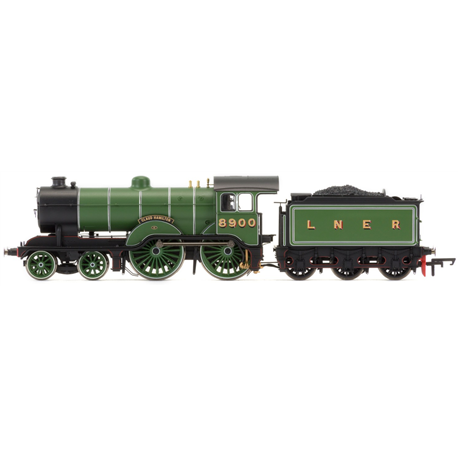No products
Product successfully added to your shopping cart
There are 0 items in your cart. There is 1 item in your cart.
 View larger
View larger LNER, D16/3 Class, 4-4-0, 8900 'Claud Hamilton' - Era 3
R3433
Hornby
LNER, D16/3 Class, 4-4-0, 8900 'Claud Hamilton' - Era 3
DCC Ready
This product is out of stock
More info
LNER, D16/3 Class, 4-4-0, 8900 'Claud Hamilton' - Era 3
DCC Ready
A popular and successful design of 4-4-0 tender engine, the first of the Great Eastern Railway class S46 locomotives, No.1900 Claud Hamilton, left Stratford Works in March 1900 and was, at that point, the largest express locomotive on the GER. The design of the class is often credited to James Holden, Superintendent of the GER at the time, but he was out of the country during this period and it was actually Stratford Works’ Chief Draughtsman, Frederick V. Russell, who was responsible for most of the design work.An order for an additional forty locomotives followed, built between 1900 and 1903, which were classified by the GER as S46 (later to be re-classified as Class D14 by the London North Eastern Railway). Very quickly the class became known as ‘Clauds’ and further batches were produced between 1904 and 1911, these were fitted with Belpaire boilers and classified as D56 (which were later to become Class D15). The final batch of ten engines, this time classified by the GER as H88, were built just after Grouping and fitted with 5’ 1” diameter superheated Belpaire boilers, leading to them being aptly named ‘Super Clauds’ and classified as Class D16 by the LNER.Out of the 121 locomotives built, 117 ‘Clauds’ made it to Nationalisation in 1948 and by 1949, when rebuilding of the class ceased, 104 engines had been converted to D16/3. The withdrawal of the D16/3 class actually commenced in 1945, but they were still being used quite extensively on the Eastern region, even making it up to Cheshire. From 1955, the rate of withdrawal increased and No.62613 was the last to be withdrawn, from March Shed, in October 1960. None, sadly, were preserved.Locomotive No.1900 was the only one of its class to be named, taking the name Claud Hamilton after the company’s Chairman. Starting life as a S46 (D14), Claud Hamilton went through all the changes and modifications experienced by the class, finally becoming a D16/3 in May 1936. Renumbered four times, Claud Hamilton spent most of its life allocated to Stratford Shed, apart from a week in September 1930 and six months at Colchester during 1940. Upon being withdrawn from service on May 27, 1947, the nameplates were then transferred to No.2546, until that locomotive was scrapped in 1957

